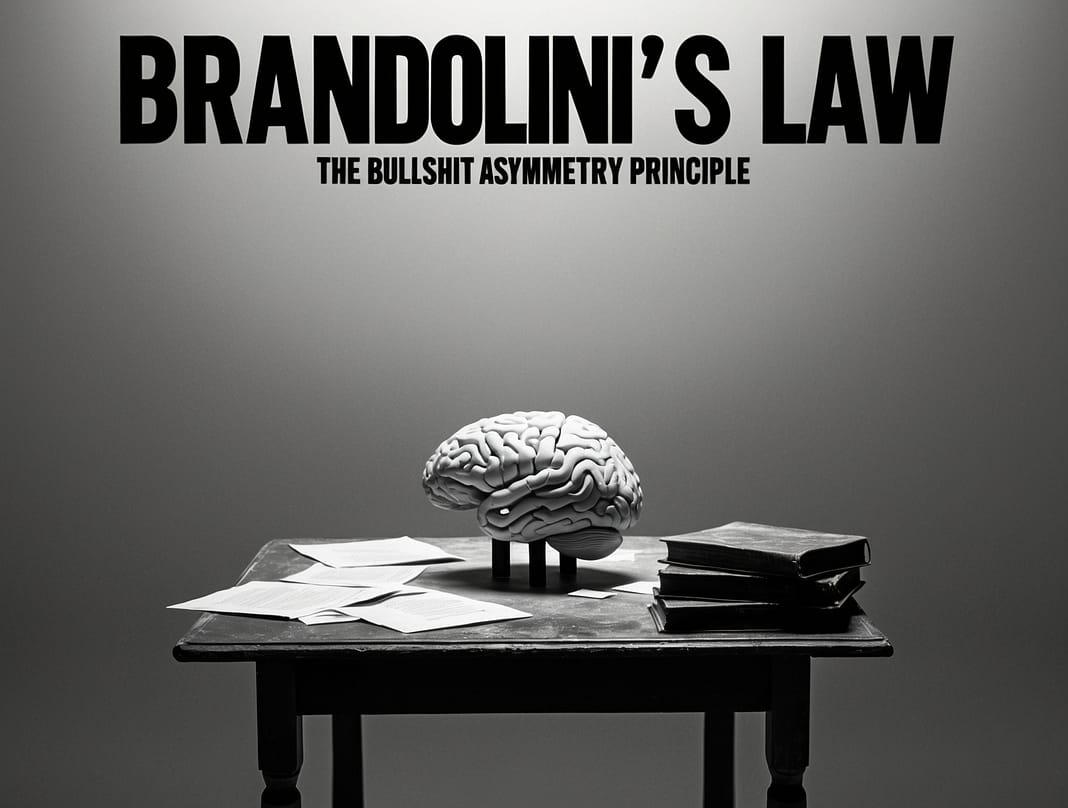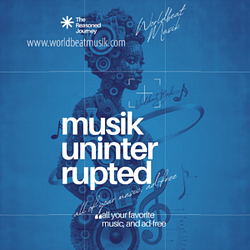There is a truth that lingers, heavy in the air, one we cannot shake. It is a truth that we have known for generations, but still, we are asked to prove its validity again and again: that the legacy of slavery did not die with the last whip on the last enslaved back. It breathes in the cracks of the justice system, echoes in the halls of underfunded schools, and rests on the sterile sheets of hospital beds where Black bodies are still treated as lesser. But here we are, caught in a cycle that mirrors a tragic law of human nature.
Brandolini’s Law tells us that the energy required to refute falsehoods is exponentially greater than the energy needed to create them. And isn’t this the story of our lives? The descendants of enslaved people, spending untold mental and emotional bandwidth just to prove that the damage done wasn’t erased with an Emancipation Proclamation or a signed Civil Rights Act. The lies that deny systemic racism are quick and light—they flutter through the air with the ease of ignorance. But to dismantle them? That’s work that weighs on the soul.
We are tasked, even today, with naming the ghosts that walk among us. We must point them out, one by one, as if the bones they leave behind aren’t enough evidence of their existence. And we must keep naming them, even when the world acts like it’s tired of hearing their names. Because the lies, the half-truths, the oversimplifications—they multiply quickly. “Slavery was a long time ago.” “Things are better now.” “Why are we still talking about race?” Such statements are air, but they require the weight of history and data and pain to refute.
Injustice in the Criminal Justice System
Take, for instance, the criminal justice system. The lie comes fast and easy: “If you don’t break the law, you won’t go to jail.” It is a statement that absolves its speaker of any need to think deeply about how laws themselves are constructed, about the generations of Black men who have found themselves funneled into prisons, not because they are inherently more criminal, but because they are more policed. And so, we are forced to prove what is already known. We gather the evidence of the 13th Amendment’s loophole—how slavery was abolished “except as a punishment for crime,” leading to convict leasing, a system where newly freed Black people were arrested en masse and forced into labor camps.
Today, we still see its ghost in the disproportionate incarceration of Black men, in the continuation of cheap prison labor. But the lie is so easy to state, and it takes so much work to dismantle. It requires us to collect the data on racial profiling, on the harsher sentences for Black defendants, on the school-to-prison pipeline. And even then, even with the mountains of evidence, we know that the cognitive and emotional effort to disprove this lie far outweighs the ease with which it was born.
And still, the questions persist, trending in the public consciousness: Is the criminal justice system racist? The answer, though heavy with history, is simple: yes. But the weight is in explaining why. The weight is in the stories of families torn apart, of children left fatherless, of dreams deferred. It is in the reality that Black Americans are incarcerated at nearly five times the rate of white Americans. And it is in the truth that proving this, to those unwilling to see, feels like dragging a boulder uphill.
The Fight for Education Equity
In the realm of education, the lies are much the same. “Everyone has access to the same opportunities.” “Hard work will get you where you need to go.” These myths of meritocracy float above us, light and unburdened by the truth that lives on the ground. Because if you dare to look closely, if you dare to pay attention to the cracks, you will see the underfunded schools in Black and brown communities, the textbooks that are outdated by decades, the teachers who are overworked and underpaid.
But to refute the lie, we must tell the story of how Black students were segregated and then, after desegregation, resegregated by economic lines drawn centuries ago. We must explain how redlining robbed Black families of homeownership, and how that theft directly impacts the schools their children attend today, as school funding is still tied to property taxes. We must explain how the school-to-prison pipeline begins here, with children who are more likely to be punished, more likely to be expelled, more likely to be funneled into a system that does not value their potential.
The question that trends now: Is education still unequal for Black students? The truth: yes. But answering that question requires more than a yes—it requires the weight of explaining the centuries of inequality that got us here. It requires the heavy lifting of showing how those inequalities are perpetuated, not by the failures of individual students, but by a system designed to fail them.
Healthcare: The System of Survival
And then there is healthcare—an institution where Black lives have long been devalued. It’s too easy to say, “Everyone has access to the same doctors, the same hospitals,” but those who say this have never walked in the shoes of a Black mother, forced to fight for her life in childbirth. They’ve never known the truth of Black women being three to four times more likely to die in childbirth than their white counterparts, nor the deep roots of medical racism that trace back to enslaved women like Anarcha, Lucy, and Betsey, whose bodies were experimented on without anesthesia so that modern gynecology could be born.
The trending questions ask: Why do Black women have higher maternal mortality rates? The answer is complex and weighted by centuries of neglect, discrimination, and bias. It lies in the historical mistrust of the medical system, born of generations of medical abuse, and in the ongoing bias that Black women still face when their pain is dismissed or minimized.
To prove that these disparities are not a coincidence, we must dive into history and data. We must explain environmental racism, food deserts, and the lack of access to adequate healthcare facilities in predominantly Black neighborhoods. We must show the systemic neglect that leads to these outcomes. All this effort just to prove what is already there for anyone who cares to see.
The Weight of Truth and Lies
In the end, the truth is not in short supply. It’s right here, in front of us, in the disparities we live with every day. But Brandolini’s Law reminds us that lies, once told, take on a life of their own. They travel quickly, lightly, untethered by the weight of evidence or history. And so, we who are descended from those who built this country with their blood and their backs are forced to do the hard, laborious work of dragging the truth into the light, again and again. We are asked to prove that which we already know.
And it is exhausting.
But the alternative is silence. The alternative is to let the lies win. And so we gather our strength, we gather the stories of our ancestors, we gather the data and the history and the pain, and we continue. We continue to name the ghosts and tell their stories, because if we don’t, who will?
There will always be another question, another trending query that asks us to explain what we live, to prove what we feel. But the answer is the same. Yes. Slavery’s legacy is here, and it is heavy. And though the work to refute the lies is hard, we carry it because the truth deserves nothing less.
Discover more from The Reasoned Journey
Subscribe to get the latest posts sent to your email.


